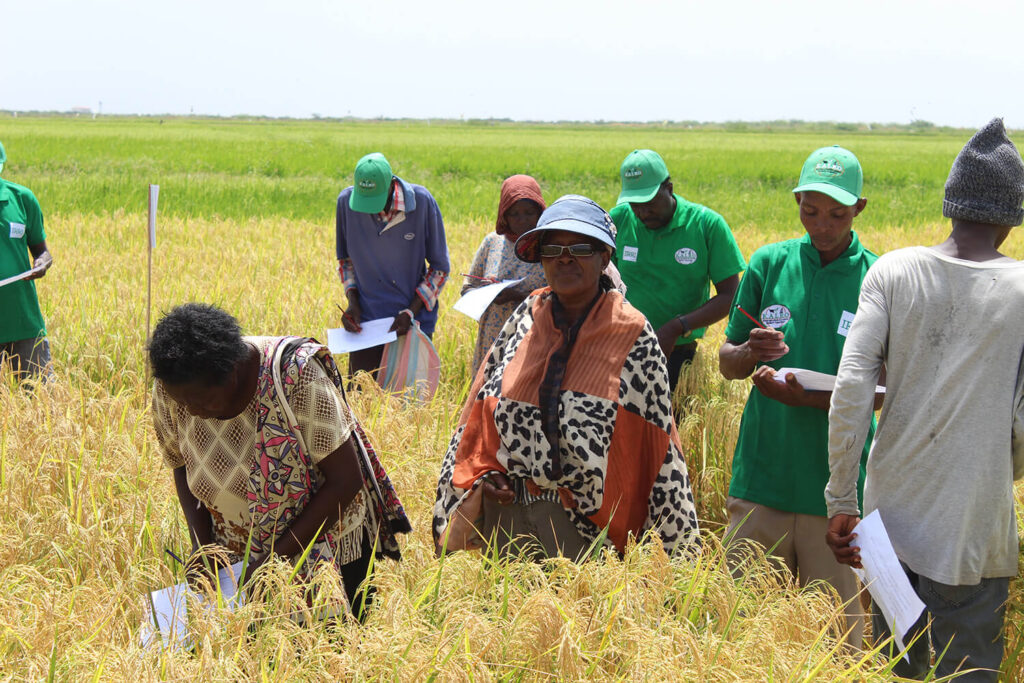The Kenya Agricultural Livestock and Research Organization (KALRO) is trialing two new rice varieties, 08FAN10 (Mkombozi) and CSR 36, set to be released for wider use by farmers in June.
The new varieties which were developed in conjunction with the International Rice Research Institute (IRRI) and the Lake Basin Development Authority (LBDA) can double the production of rice cultivars currently grown by farmers.
The two new varieties are also early maturing, taking just 85-120 days to reach harvest. Common rice varieties in Kenya reach maturity in 150 days. They are also capable of being grown in poorer soils with minimal moisture and are resistant to common rice pests and diseases in Kenya.
Related News: Advanta Seeds to produce, distribute in-demand Kamboka rice to farmers
Related News: KALRO launches drought resistant rice, doubles basmati yield
Speaking during the seed distribution event to 250 farmers on at Homa Bay County, Kalro’s Industrial Crop Research Institute Director, Finyange Pole added that the organisation was also training farmers on a new planting technology; Direct Seed Rice.
“Instead of farmers first raising rice seeds in a nursery before transplanting, with this technology you’ll just plant the rice directly on the farm as a seed. This will greatly save farmers time and labor,” he said.
According to IRRI, CSR 36 can yield up to 5.5–6.0 tons per hectare under sodic soil conditions. These are hard, cloddy and high pH soils characterised by poor plant growth and germination. In contrast, Basmati 3700– a popular local variety, only yields 2.4 – 3.8 tons per hectare under similar stressful environments.
Related News: Apple Snail Invasion Serious Threat to Rice Production and Food Security in Kenya
“These findings show that the variety is tolerant to these sodic soil conditions. Other than its salinity tolerance, CSR 36 is also medium-maturing, aromatic, has long and thin grains, softens when cooked, is non-sticky, and has ratooning ability. These characteristics closely reflect the preferences of farmers and consumers. Hence, it is anticipated that if demonstrated and positioned well, the variety will be extensively grown in the nation. This follows a similar adoption trend in the Komboka rice variety, where there was a significant growth in the variety’s area of cultivation from roughly 40 to 4,435 acres across the country from 2019-2021,” read the statement by ILLRI
Kenya currently produces just 200,000 metric tons of rice annually against a projected demand of 800,000 metric tons. This necessitates the importation of over 600,000.
According to LBDA managing director Wycliffe Ochiaga, this gap can only be bridged by growing high yield rice varieties and employing new and innovative farming techniques.
Photo Courtesy: IRRI
